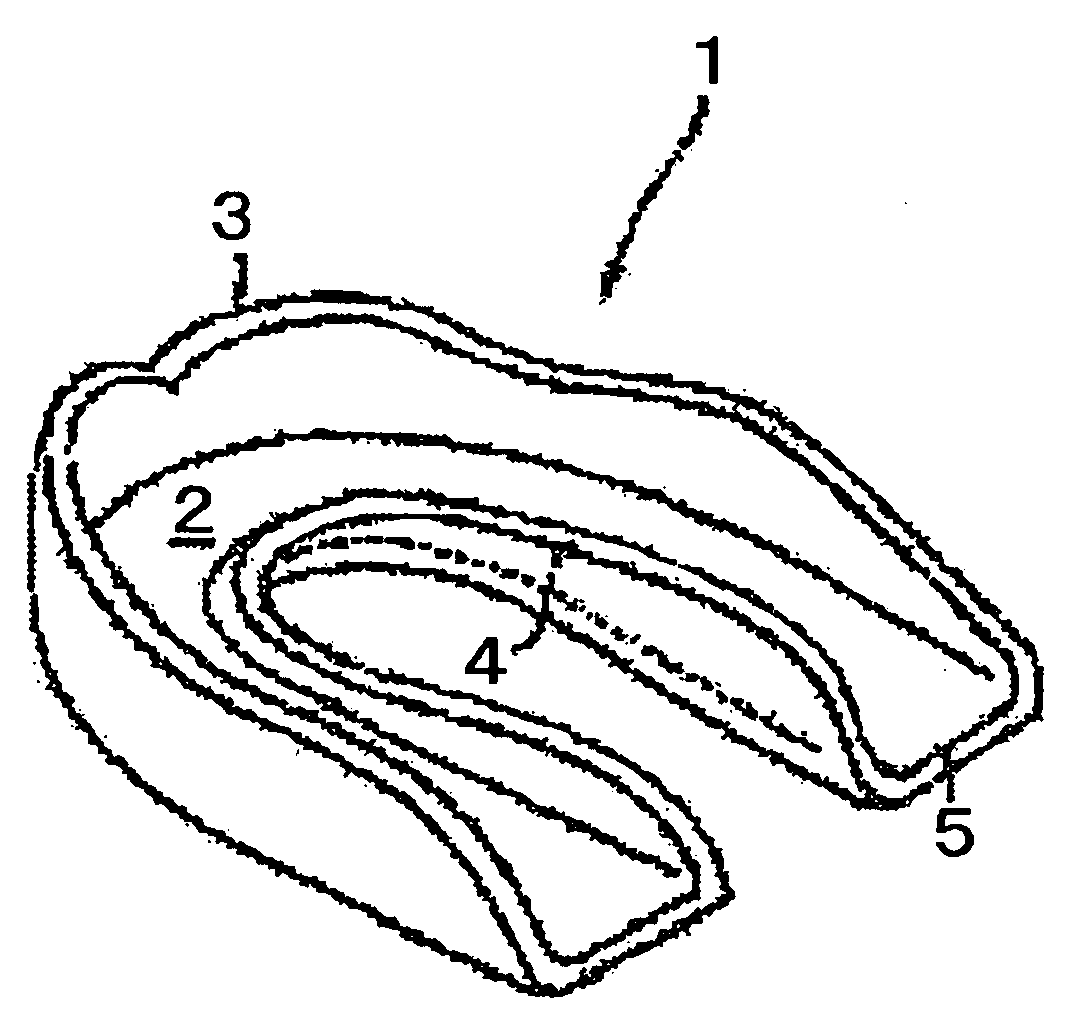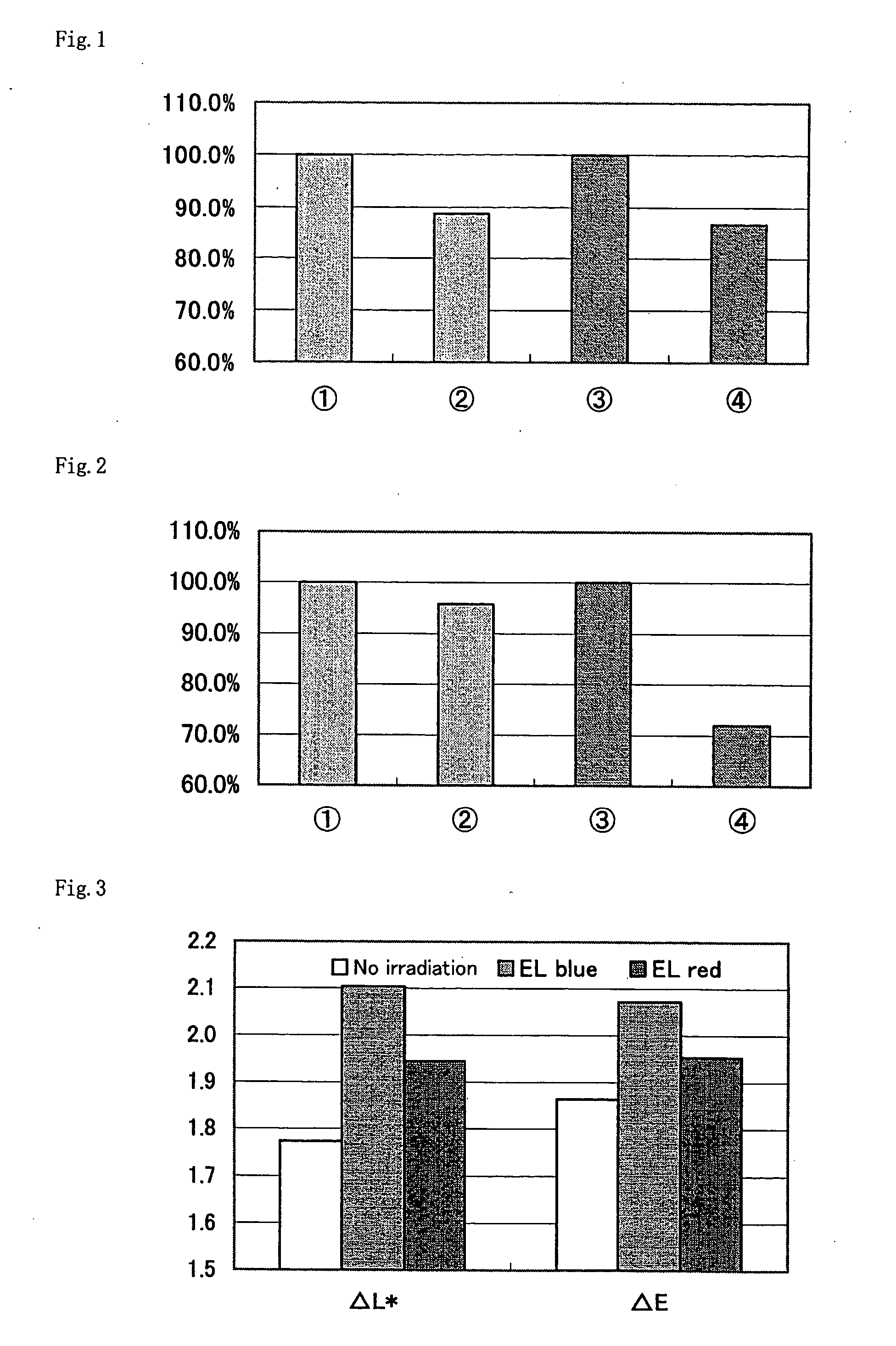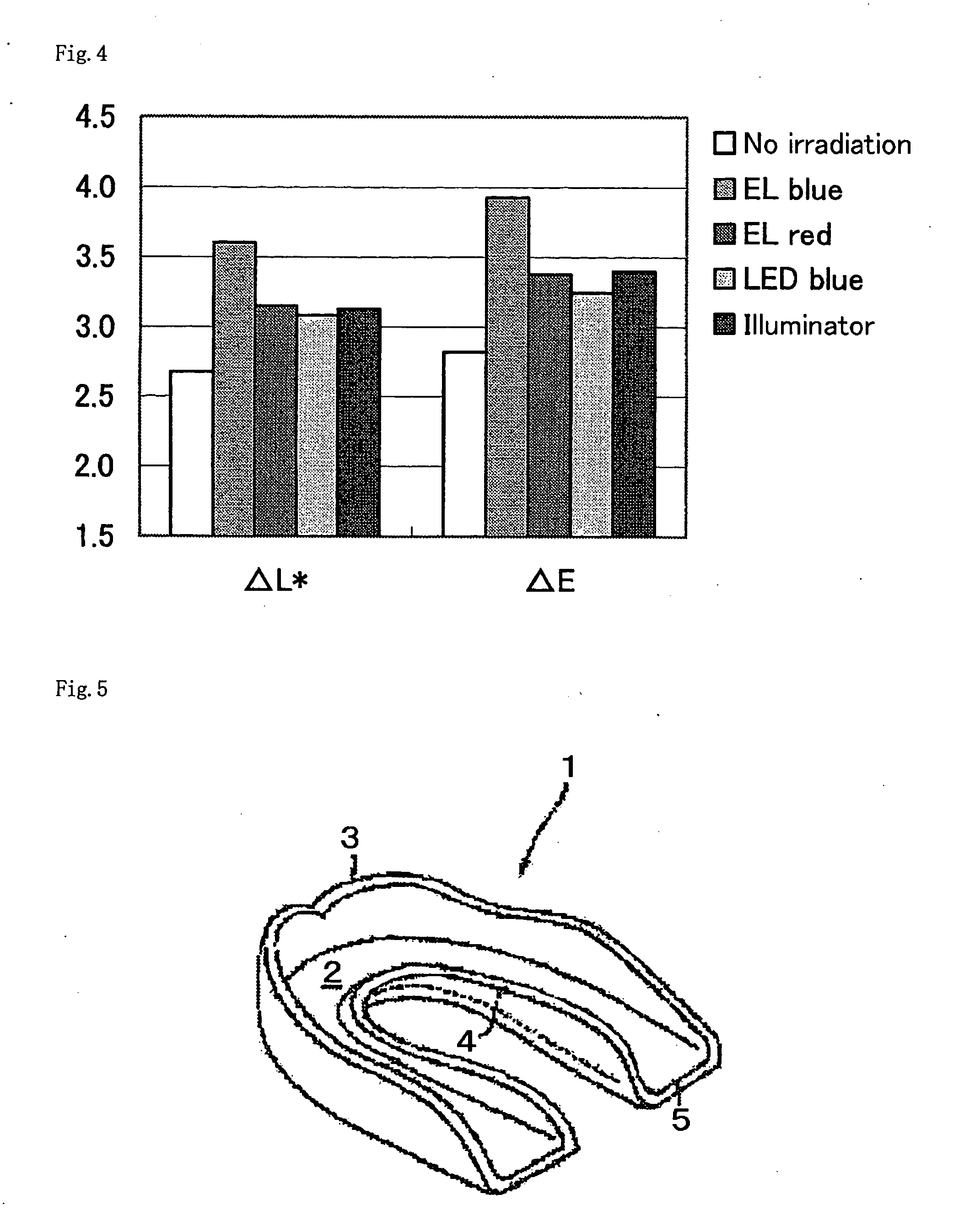Light Irradiation Device For Oral Cavity
a light irradiation device and oral cavity technology, applied in radiation therapy, medical science, therapy, etc., can solve the problems of tooth discoloration, damage to the biological body/tooth, tooth discoloration, etc., and achieve the effect of simple and safe manner
- Summary
- Abstract
- Description
- Claims
- Application Information
AI Technical Summary
Benefits of technology
Problems solved by technology
Method used
Image
Examples
example 1
[0048] Sample liquids from No. 1 to No. 4 were added to a discolored 5,000 ppm tetracycline hydrochloride solution (5 mL). Samples No. 1 and No. 3 were heated at a temperature of 37° C. for 15 minutes and 40 seconds in a dark room, while Samples No. 2 and No. 4 were irradiated by a yellow EL sheet (manufactured by Seiko Precision Inc.) from the above for 40 seconds, and then were heated at a temperature of 37° C. for 15 minutes. Each Sample were centrifuged at a speed of 8,000 rpm for 5 minutes to obtain a supernatant liquid, and an absorbance of the supernatant liquid was measured using a wavelength of 358 nm, that is, the wavelength at which maximum absorption of tetracycline hydrochloride occurs. In each Sample, Samples No. 1 and No. 2 were 35% hydrogen peroxide (5 mL) and Samples No. 3 and No. 4 were titanium oxide (1 g) and distilled water (5 mL). The results are shown in FIG. 1. In FIG. 1, the absorbance of Sample No. 1 was set to be 100, and the absorbance of Sample No. 3 was...
example 2
[0049] Sample liquids from No. 1 to No. 4 were added to a discolored 0.1% methylene blue solution (5 mL). Samples No. 1 and No. 3 were heated at a temperature of 37° C. for 15 minutes in a dark room, while Samples No. 2 and No. 4 were irradiated by a green EL sheet (manufactured by Seiko Precision Inc.) from the above for 40 seconds, and then were heated at a temperature of 37° C. for 15 minutes. Each Sample were centrifuged at a speed of 8,000 rpm for 5 minutes to obtain a supernatant liquid, and an absorbance of the supernatant liquid was measured using a wavelength of 665 nm, that is, the wavelength at which maximum absorption of methylene blue occurs. In each Sample, Samples No. 1 and No. 2 were 35% hydrogen peroxide (5 mL), and Samples No. 3 and No. 4 were titanium oxide (1 g) and distilled water (5 mL). The results are shown in FIG. 2. In FIG. 2, the absorbance of Sample No. 1 was set to be 100, and the absorbance of Sample No. 3 was set to be 100.
example 3
[0050] A filter paper having a diameter of 6 mm was immersed in a 0.1% hematoporphyrin solution, and was dried, and then the initial color of the resulting paper was measured by a colorimeter (E1). The filter paper and 35% hydrogen peroxide (8 mL) were put in a plastic dish having a diameter of 50 mm, which was irradiated by a red EL sheet (manufactured by Seiko Precision Inc.) and a blue EL sheet (manufactured by Seiko Precision Inc.) for 40 seconds, and then heated at a temperature of 37° C. for 15 minutes. For a non-illuminated blank, the dish was covered with aluminum foil, and then heated at a temperature of 37° C. for 15 minutes and 40 seconds. After the heating, the filter paper was washed with distilled water (40 mL) and dried, and the color was measured by a colorimeter (colormate) (E2). The results are shown in FIG. 3. FIG. 3 shows ΔL and ΔE which are obtained by subtracting the initial color values (E1) from the color values changed after light irradiation (E2).
PUM
 Login to View More
Login to View More Abstract
Description
Claims
Application Information
 Login to View More
Login to View More - R&D
- Intellectual Property
- Life Sciences
- Materials
- Tech Scout
- Unparalleled Data Quality
- Higher Quality Content
- 60% Fewer Hallucinations
Browse by: Latest US Patents, China's latest patents, Technical Efficacy Thesaurus, Application Domain, Technology Topic, Popular Technical Reports.
© 2025 PatSnap. All rights reserved.Legal|Privacy policy|Modern Slavery Act Transparency Statement|Sitemap|About US| Contact US: help@patsnap.com



